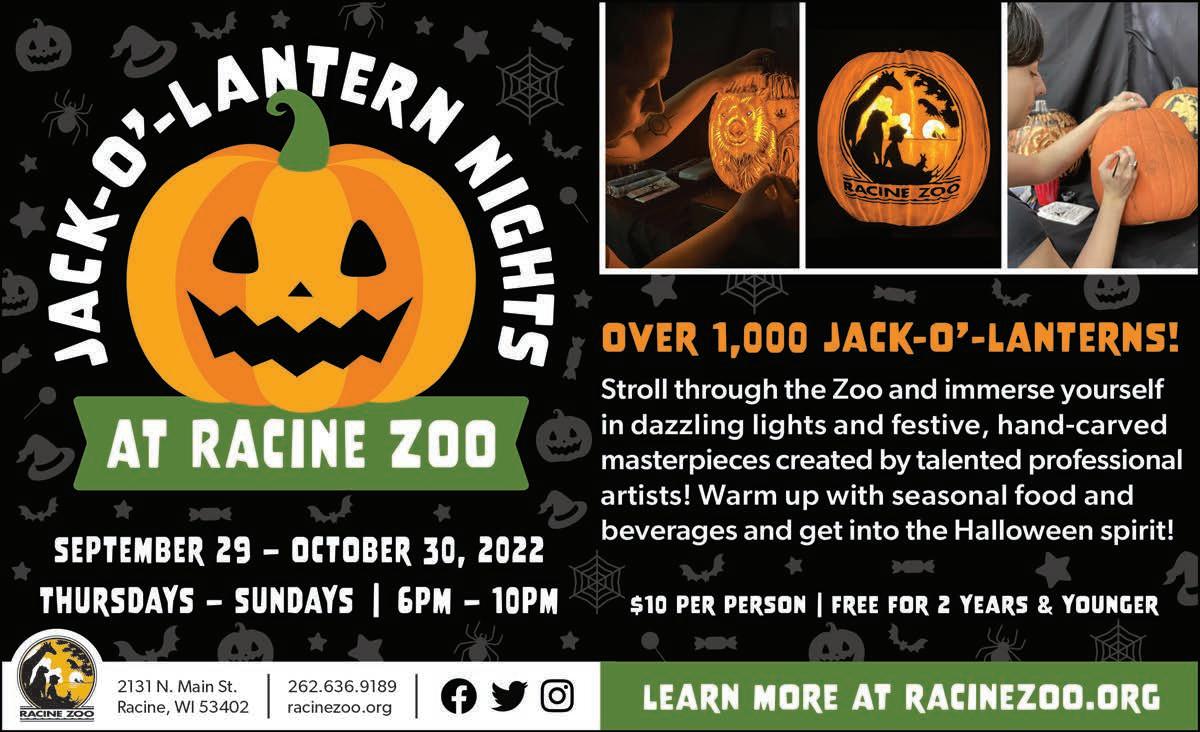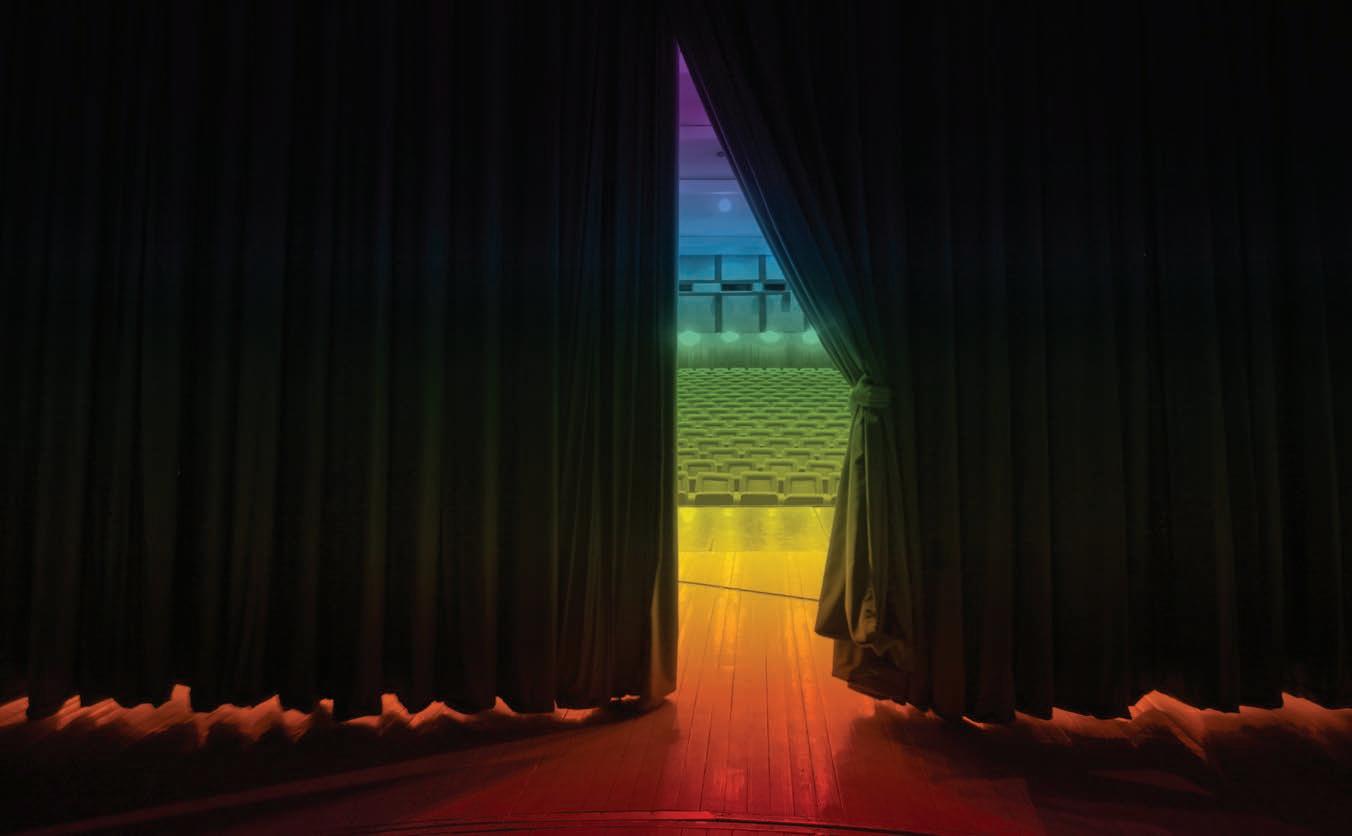
7 minute read
Those Old Milwaukee Bronzeville Streets Were Second to None




Photo courtesy of Historic Photo Collection / Milwaukee Public Library.

BY RICHARD G. CARTER


Whenever I return to Milwaukee for a visit, I am struck by changes in the character of the town where I was born, raised and educated. And most of my memories are pleasant, because good memories have a way of sticking together like the pages of a dog-eared old book.
What really sticks in my mind after returning to New York is the disappearance of the Black middle-class near North Side neighborhoods and shopping areas of my Milwaukee youth.
They simply are no more—many having given way to urban blight, expressways, white gentrification and a shifting population. Where once stood grocery stores, two-family houses, familiar alleys, recognizable corners, taverns with memorable names and memorable reputations, now there is mostly nothing. And it’s a shame.
Two churches where I worshipped are no longer there, replaced by empty lots. Two schools I attended are gone or boarded-up, their playgrounds dotted with weeds and crawling with cracks. A notable exception is my alma mater, Lincoln High, which has assumed a wonderful new cultural identity.
Barbershops, beauty parlors, restaurants, movie houses, drugstores, supermarkets and department stores (and even trees that were a part of my formative years in town) are extinct. And so are the backyards where I picked crab apples and plucked grapes. And the big brick house where I was born at 117 W. Vine Street has vanished.


THRIVING BLACK BUSINESSES
Most of my fondest Milwaukee memories are of a mostly Black area in the 1950s which, along with other inner-city neighborhoods, came to be known as “Bronzeville.” It roughly ran on West Walnut Street from North Sixth to North 12th streets. To my late parents—Sanford and Juanita Carter—and my many young Black friends, this part of town was the most to say the least.
West Walnut boasted a wide variety of Black-operated businesses. Included was

Deacon Jones’ Chicken Shack, Larry’s Frozen Custard, Clara’s Restaurant, Colonial Barber Shop, Art’s Shine Parlor, O’Bee’s Funeral Home, the Bop Shop, Harlem Records, V&V Supermarket, Roosevelt Junior High School, Booker T. Washington YMCA, and my father’s Milwaukee Globe newspaper office. Taverns we referred to as “joints,” such as the Rose Room, Savoy Lounge, 700 Tap and 711 Bar, are long gone. Each sponsored a softball team in a Sunday morning league at nearby Lapham Park.

And, of course, there was the legendary Regal movie theater, at N. Seventh Street, we called “The Flick.” Early teens my age would flock to the Regal to pay a cut-rate admission for Friday night second-run movies after 9:30 p.m. and yell our heads off on Saturday night amateur shows and Sunday afternoon shoot-em-up “cowboy pictures.” And what a joyous time we had.

Luckily for me and my family, Sixth and Walnut was a mere block from our home. This was great for my movie-loving mother, who sometimes took me with her to the Regal at night for Lena Horne features and Cab Calloway “soundies.” In those days, the family of Al Jarreau— future great jazz vocalist—lived next door to us before they moved to North Fourth and West Reservoir.




MUSIC AND SPORTS
As an older teenager, Walnut also was special for me due to visits by Black celebrities and athletes such as heavyweight champion Joe Louis, Hank Aaron, Marquette basketball players and popular rhythm and blues vocal groups in town to appear on stage at the Colonial movie theater, at 16th and Vliet.
The Moonglows, Spaniels, El Dorados and Clovers drew big crowds performing their best-known records a cappella on the sidewalk outside Larry’s, famed for its Orange Blossom ice cream concoction. One such group—the youthful Five Notes of Chess Records—continuously sang their two-sided hit “Show Me the Way” and “Park Your Love” written by white Milwaukee disc jockey, Chuck Dunaway. On summer nights, Black R&B record hits boomed from car radios with open windows cruising Walnut Street via Randy’s Record Shop, on clear channel WLAC in Nashville. These popular sounds never failed to capture the attention of everyone on the crowded, bustling sidewalks. We later learned the station’s Randy Wood—who founded DOT Records—was white, as was his Back-sounding dee-jay, Hoss Allen.
As a journalist, among my favorite Bronzeville memories was that of Dan Travis, affectionately known as “The Bee Man,” who hawked copies of a Black newspaper, The Chicago Bee. He often stopped by my father’s newspaper office, offering advice and counsel.
Then there was blind old A.C., who riveted customers in Mr. Brown’s Colonial Barbershop, with personal stories of legendary, controversial heavyweight champion Jack Johnson. I clearly recall a day, A.C. said this of Johnson: “Jack was a very dark man and really liked white women, which got him in a whole lot of trouble.”


WHEN THIRD STREET HAD EVERYTHING
Recently driving in one of my old neighborhoods, I passed a steep, winter sled-riding alley of my pre-teens in the shadow of a great Milwaukee brewery that has departed the city of its birth. I stopped, got out and fondly reminisced, recalling where the stately brick house stood. Heading west two blocks, I came to North Third Street (now Martin Luther King Drive) and turned north, passing remnants of what was one of the city’s most convenient and varied shopping areas. From the late 1940s-’60s, this part of Third Street seemed to have everything.
There was Niss Furniture and Schuster’s department store, Kresge’s and Woolworth’s, W.T. Grant’s dime stores and Walgreen’s. There was Radio Doctors for buying records and the Gay Garden for eating Chinese. There were the Atlas (Century), Fern and Garfield theaters for movies and Rosenberg’s for outer garments of quality. Patti Brothers sold accordions, Bitker-Gerner sold ladies’ dresses, Pivar Brothers sold men’s apparel and Kinney’s sold shoes. Fresh fish were available, as were dogs and cats and many other kinds of pets. The J. Kornely Hardware Co. did a landslide business in nuts and bolts, bigname supermarkets occupied choice corners on Third and nearby North Avenue, and Brills outfitted generations of Black fathers and sons.
Other memorable streets, places and names come to mind. Six blocks north of Walnut—on North Avenue—Krambo Supermarket at N. Fourth, an A&P at N. Fifth, the old Northside YMCA at Sixth, Sangor Drugs at Eighth, the Ron De Voo Ballroom at 12th, the Prince Hall Masonic Temple near North Teutonia Avenue and the Roosevelt movie house at N. 14th.
The Northside Y’s Friday “Canteen Nights” was jammed with Black students from Lincoln and North Division high schools. In addition to many Saturday night house parties in Bronzeville, the “Y” was where we slow-danced and bopped to the latest doo-wop and Black R&B hit records. The ones most loved and heard were “Baby, It’s You” by The Spaniels, “Darling Dear” by The Counts and “White Christmas” by The Drifters.
Such streets and neighborhoods of my first 21 years left an indelible impression on me. They gave my Milwaukee its true character, and this native son lasting memories. It was “much good,” as we used to call our fabled Bronzeville.
Richard G. Carter was a Milwaukee Sentinel reporter, Milwaukee Journal columnist and local radio commentator, a New York Daily News columnist, and has appeared on “Larry King Live” and “Donahue.”
To read about Bronzeville today, visit Tom Jenz’s Central City Stories column at shepherdexpress.com.










